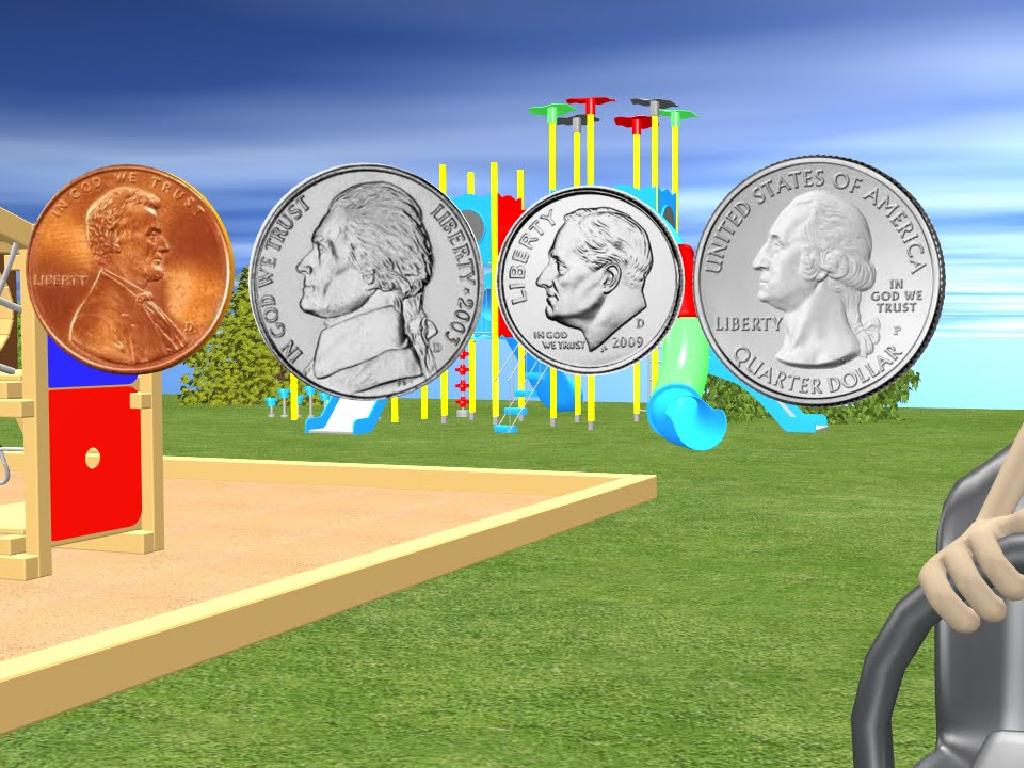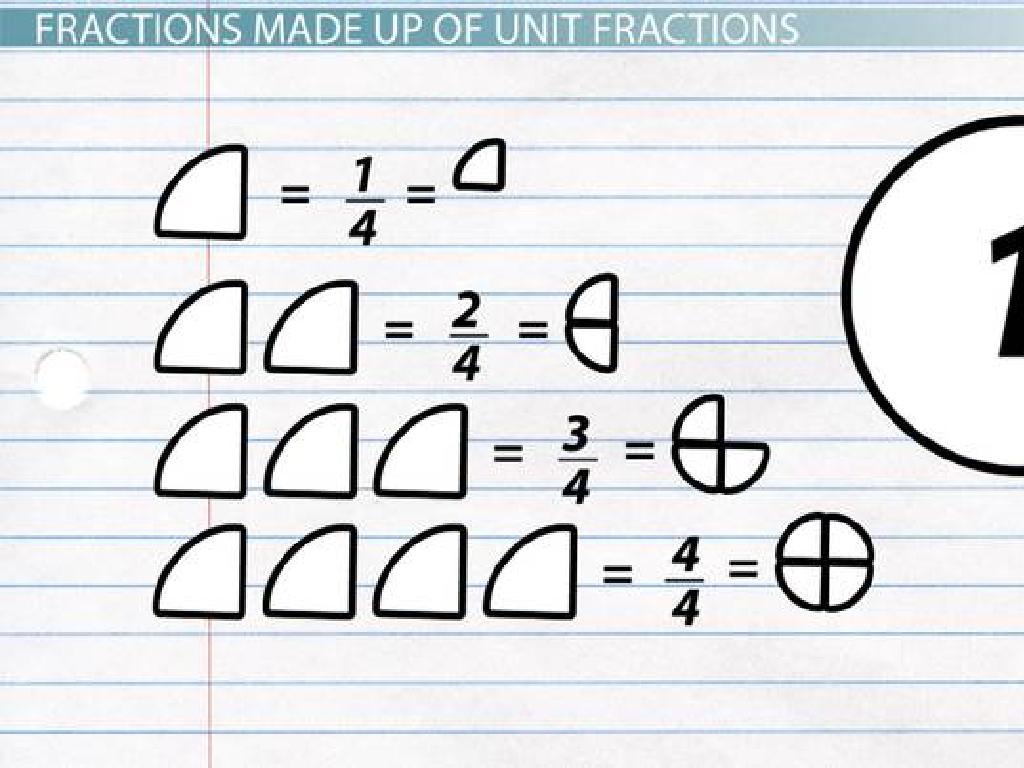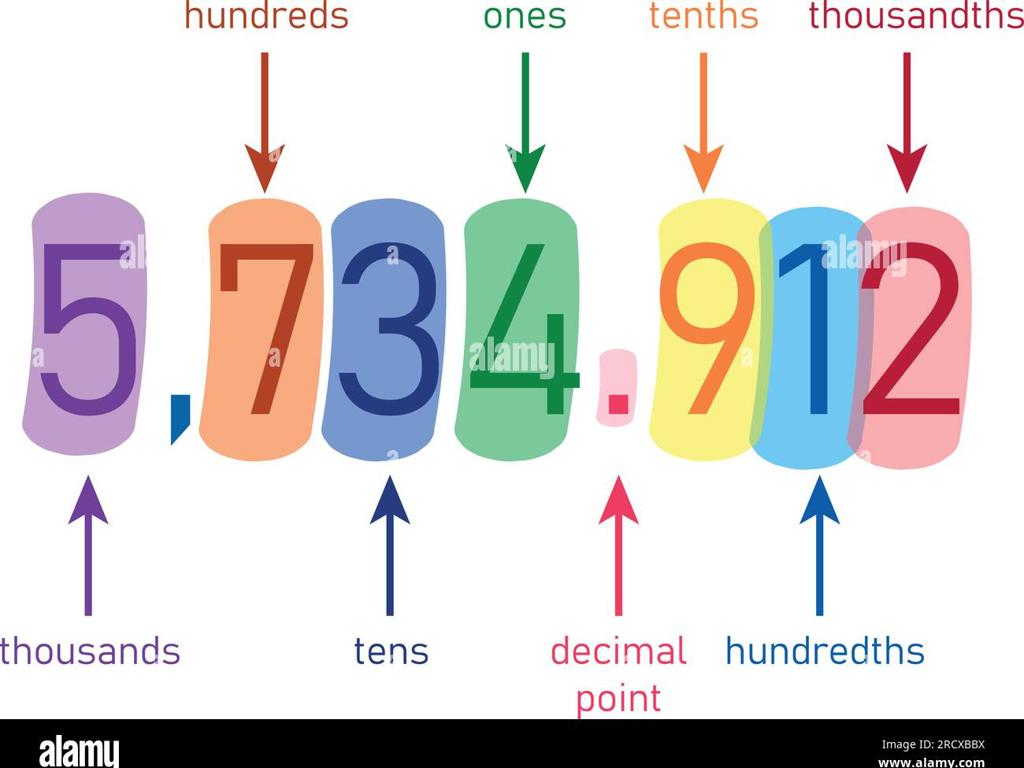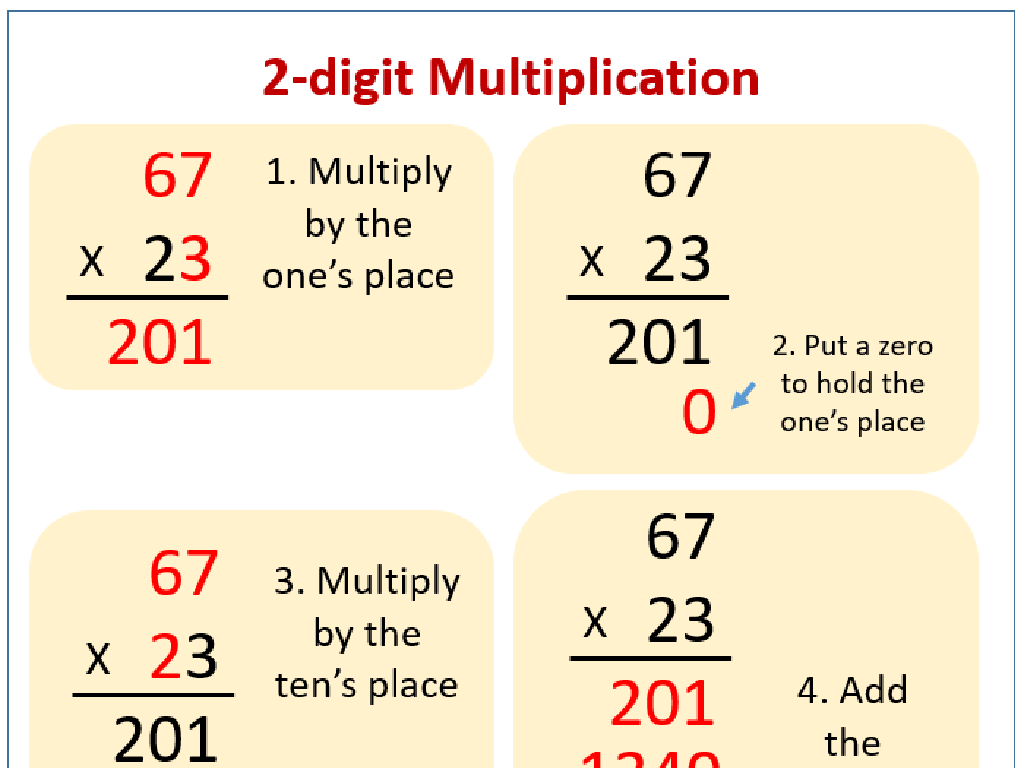How Do Balanced And Unbalanced Forces Affect Motion?
Subject: Science
Grade: Fifth grade
Topic: Force And Motion
Please LOG IN to download the presentation. Access is available to registered users only.
View More Content
Exploring Forces and Motion
– What are forces?
– Forces are pushes or pulls that can change an object’s motion or shape.
– Defining motion
– Motion is the change in an object’s position over time.
– Forces influencing motion
– Forces cause objects to start moving, stop moving, or change direction.
– Balanced vs. Unbalanced forces
– Balanced forces don’t change motion; unbalanced forces do.
|
This slide introduces the fundamental concepts of forces and motion, tailored for a fifth-grade science class. Begin by explaining that forces are either pushes or pulls that can cause objects to move or change shape. Clarify that motion is simply the movement of an object from one place to another. Discuss how forces affect motion by causing objects to start or stop moving, or to change their direction. Highlight the difference between balanced forces, which are equal in size and opposite in direction, thus not causing a change in motion, and unbalanced forces, which result in a change in motion. Use everyday examples such as playing on a seesaw (balanced forces) and kicking a soccer ball (unbalanced force) to illustrate these concepts. Encourage students to think of other examples from their daily lives.
Understanding Forces
– Force: a push or a pull
– Forces cause motion changes
– Objects move, stop, or change direction due to forces
– Examples: gravity, magnetism
– Gravity pulls objects down, magnets attract or repel, hands push or pull objects
– Applied force in action
– When we push a toy car, we’re applying force to it
|
This slide introduces the concept of force to the students, explaining that it is essentially a push or a pull that can cause an object to move, stop, or change its direction. Use everyday examples to illustrate different types of forces, such as gravity, magnetism, and applied force. For instance, when discussing gravity, you could drop an object to show how it falls to the ground. For magnetism, demonstrate with a magnet how it can attract or repel certain metal objects. Finally, show applied force by pushing or pulling an object across a table. Encourage students to think of other examples of forces they experience in their daily lives.
Understanding Balanced Forces
– Balanced forces are equal and opposite
– Forces with the same strength but acting in opposite directions
– They do not change motion
– An object stays still or continues at the same speed and direction
– Example: A book on a table
– The book is not moving even though gravity pulls it down and the table pushes it up
|
This slide introduces the concept of balanced forces to the students. Balanced forces are of equal magnitude but act in opposite directions, resulting in no net force on the object. Consequently, there is no change in the object’s motion; it will not start moving, stop, or change direction. An everyday example is a book lying on a table, where the force of gravity is balanced by the upward force exerted by the table, keeping the book stationary. It’s crucial to emphasize that balanced forces are always in pairs and they cancel each other out, leading to a state of equilibrium. Encourage students to think of other examples where forces balance out and no motion occurs.
The Effects of Unbalanced Forces
– Unbalanced forces cause motion changes
– When forces are unequal, they don’t cancel out
– They can start, stop, or change direction
– An object at rest may move or a moving object may stop or turn
– Example: Kicking a soccer ball
– When you kick a ball, it rolls because of the force from your foot
|
This slide focuses on unbalanced forces and their ability to change an object’s motion. Unbalanced forces occur when two forces acting on an object are not equal in size, causing the object to accelerate, decelerate, or change direction. An everyday example is kicking a soccer ball, which demonstrates how an applied force can set a stationary object in motion. Discuss with students other examples, such as pushing a swing or a car braking to a stop, to illustrate the concept. Encourage them to think about how the direction and strength of the force affect the object’s movement.
Gravity: A Force That Pulls
– Gravity pulls objects together
– Every object exerts a force that attracts other objects.
– It keeps us grounded
– We don’t float away because gravity holds us on Earth.
– Objects fall due to gravity
– When you drop something, it falls down, not up or sideways.
– Mass affects gravitational pull
– The bigger an object, the stronger its pull; like Earth and a marble.
|
Gravity is one of the fundamental forces in our universe, and it’s responsible for the attraction between objects with mass. It’s the reason we stay firmly on the ground and why objects fall when dropped. The force of gravity depends on the mass of the objects; the greater the mass, the stronger the gravitational pull. This is why Earth, which has a large mass, exerts a significant gravitational force, keeping everything from people to the atmosphere from drifting into space. When discussing gravity with students, use practical examples like dropping various objects to show gravity’s effect and explain that mass is the amount of ‘stuff’ in an object, which influences the strength of gravity.
Investigating Motion: Forces at Play
– Understanding motion
Motion means moving from one place to another over time.
– Observing motion in action
We can see motion by rolling balls, flying kites, or dropping objects.
– Exploring forces and motion
Forces like push and pull can start, stop, or change motion.
– Balanced vs. Unbalanced forces
Balanced forces don’t change motion; unbalanced forces do.
|
This slide introduces the concept of motion and sets the stage for understanding how forces affect it. Begin by explaining that motion is simply the change in position of an object over time. Use relatable examples like playing with toys or observing cars to illustrate motion. Discuss how forces, which are pushes or pulls, can cause objects to move or stop. Highlight the difference between balanced forces, which are equal in size but opposite in direction and do not cause a change in motion, and unbalanced forces, which are not equal and cause a change in motion. Encourage students to think of examples of both types of forces they’ve encountered in their daily lives.
Experiment: Observing Balanced Forces
– Conduct an experiment with a toy car
– Predict the car’s motion with balanced forces
– Will the car stay still or move? Discuss your predictions.
– Observe and note down the outcome
– Watch the car carefully when forces are applied equally.
– Understand balanced forces in action
|
This slide introduces an interactive class experiment to help students understand the concept of balanced forces and their effect on motion. Provide each student or group with a toy car and a flat surface to work on. Before the experiment, engage the class in a discussion to predict what will happen when balanced forces are applied to the car. Will it move or stay in place? During the observation phase, students should carefully watch the car when equal forces are applied from opposite directions and record what they see. After the experiment, discuss the results with the class to confirm that when forces are balanced, the car does not move, illustrating that balanced forces result in no change in motion. This hands-on activity will help solidify the concept of balanced forces for the students.
Experiment: Observing Unbalanced Forces
– Apply an unbalanced force to a toy car
– Push the car and see what happens
– Predict the car’s motion changes
– Will it speed up, slow down, or change direction?
– Observe and note the car’s movement
– Watch carefully how the car moves differently
– Discuss the outcome of the experiment
– Why did the car move the way it did?
|
This slide is designed for a hands-on classroom activity to help students understand the concept of unbalanced forces and their effects on motion. Provide each student or group with a toy car and a surface to push it on. Guide them to apply a force to the car and observe how it moves. Encourage them to make predictions before starting the experiment and to take notes on what they see. After the activity, lead a discussion on why the car moved the way it did, linking their observations to the concept of unbalanced forces causing changes in motion. This will help solidify their understanding of the fundamental principles of force and motion.
Forces in Our Daily Lives
– Balanced forces in daily activities
– When forces are balanced, motion doesn’t change
– Unbalanced forces we experience
– Unbalanced forces cause changes in motion
– Bicycle riding: a force balance
– Staying still or moving at constant speed
– Tug-of-war and parachutes
– Winning tug-of-war with greater force, safe landing with a parachute
|
This slide aims to illustrate the concept of balanced and unbalanced forces through relatable activities for fifth graders. Balanced forces occur when equal forces act on an object in opposite directions, resulting in no change in motion, such as a bicycle moving at a steady pace. Unbalanced forces happen when one force is greater than its opposite, causing motion to change, as seen when one team in tug-of-war pulls harder or when a parachute slows down a fall. Encourage students to think of other examples from their daily lives where they can observe balanced and unbalanced forces at play. This will help them understand the practical implications of these concepts in their everyday experiences.
Class Activity: Force and Motion Tag
– Play tag to learn about forces
– ‘It’ shows force by tagging
– When ‘it’ tags someone, they start running, showing how force starts motion
– Observe motion changes when tagged
– Notice how players stop or change direction when tagged – that’s force in action!
– Discuss forces observed in the game
|
This activity is designed to help students understand the concept of forces and motion through a physical game of tag. ‘It’ represents an unbalanced force that causes a change in motion when they tag another player. As students play, they should observe how being tagged (a force) causes them to move (motion), and how they must apply force to tag others. After the game, facilitate a discussion about how forces acted upon them during the game and how their motion changed as a result. Possible discussion questions: What happened when you were tagged? How did you have to move to tag someone else? This will help them connect the physical experience of the game with the scientific concepts of balanced and unbalanced forces.
Conclusion: Forces and Motion
– Recap: Balanced vs. Unbalanced Forces
– Balanced forces don’t change motion, unbalanced forces do.
– Effects on Motion with Examples
– Unbalanced: Pushing a toy car makes it move. Balanced: Books on a table stay still.
– Engage in Q&A Session
– Reinforce Learning Outcomes
– Review key points and answer questions to solidify understanding.
|
As we conclude, revisit the main concepts of how balanced and unbalanced forces affect motion. Balanced forces result in no change in motion, while unbalanced forces cause acceleration or deceleration. Use everyday examples like a toy car being pushed or books resting on a table to illustrate these points. The Q&A session is crucial for addressing any lingering questions and ensuring that students have a firm grasp of the topic. Encourage students to think of their own examples of balanced and unbalanced forces and how they affect motion in their daily lives. This will help them relate the concepts to real-world situations and reinforce their learning.
Homework: Observing Forces Around Us
– Draw balanced/unbalanced forces
– Sketch objects at rest or in uniform motion for balanced forces, and objects accelerating for unbalanced forces.
– Write a paragraph on motion effects
– Explain how the forces you’ve drawn affect the object’s movement – does it start moving, stop, or change direction?
– Reflect on everyday examples
– Look around you – a book on a table (balanced), pushing a toy car (unbalanced).
– Get ready to discuss in class
|
This homework assignment is designed to help students apply the concepts of balanced and unbalanced forces to real-world situations. By drawing examples from their surroundings, students will be able to visualize how these forces act on objects and affect motion. The paragraph writing will encourage them to think critically about the cause and effect relationship between force and motion. During the next class, students will have the opportunity to share their observations and discuss how their examples illustrate the principles of force and motion. This will reinforce their understanding and allow them to learn from each other’s examples.






